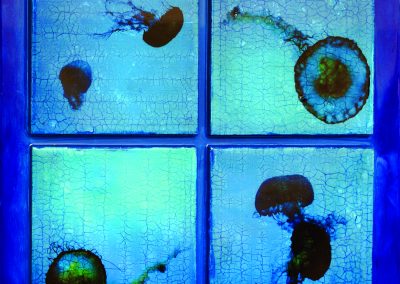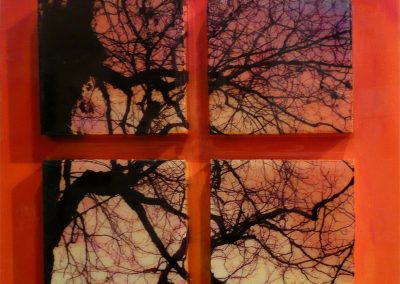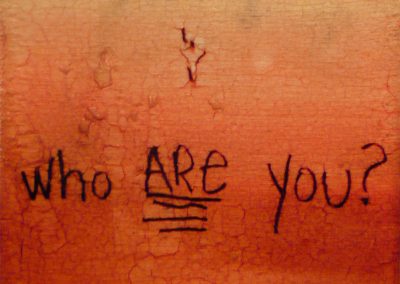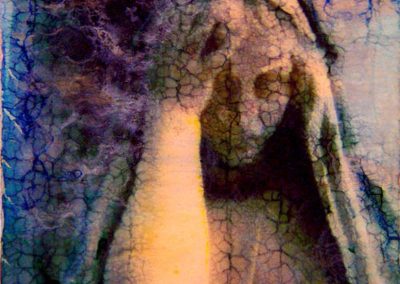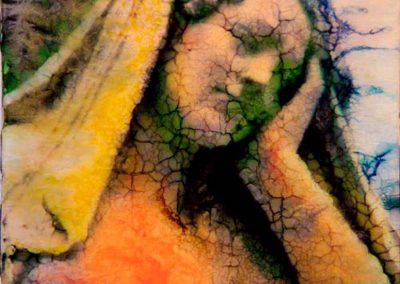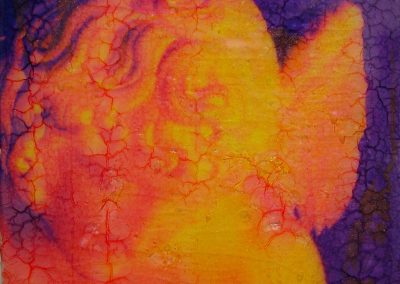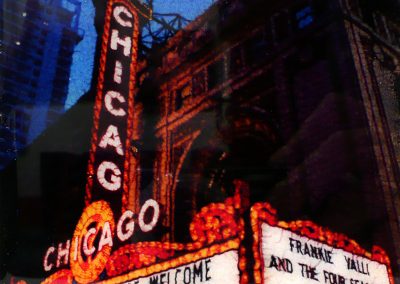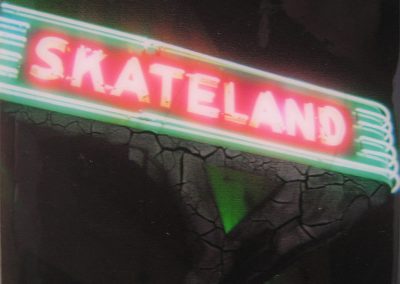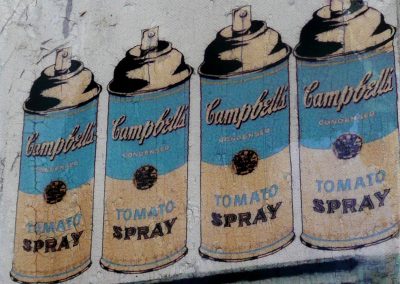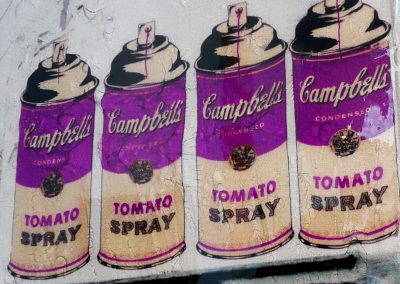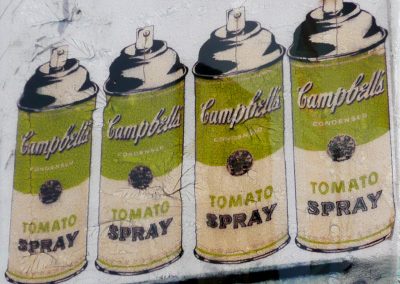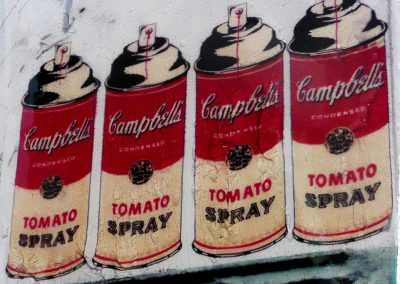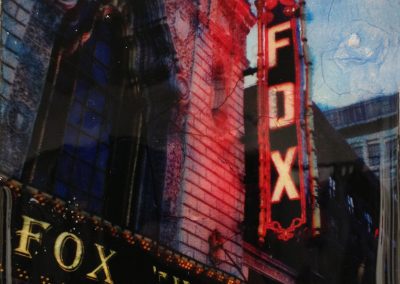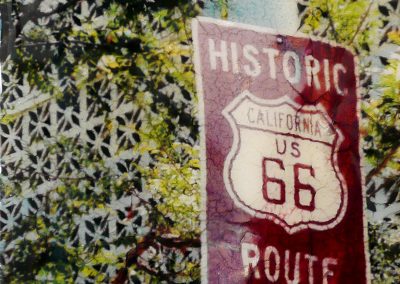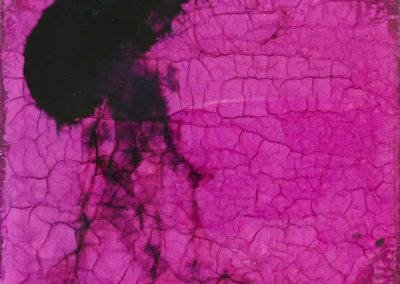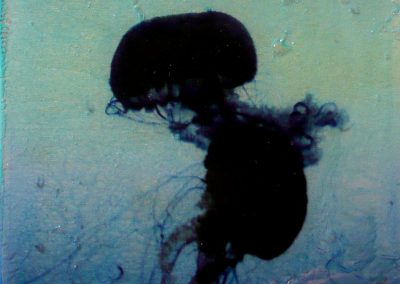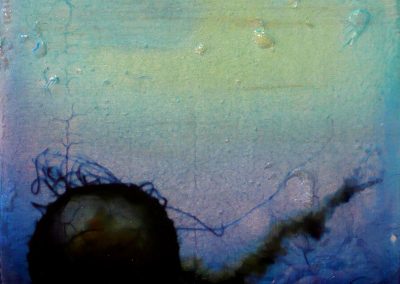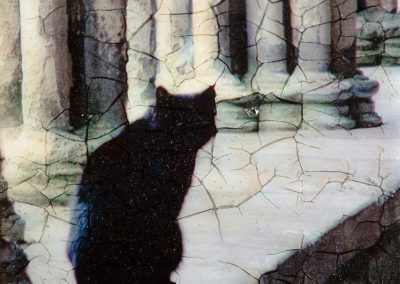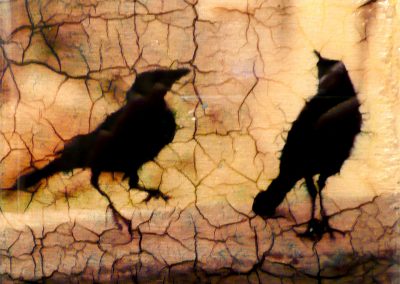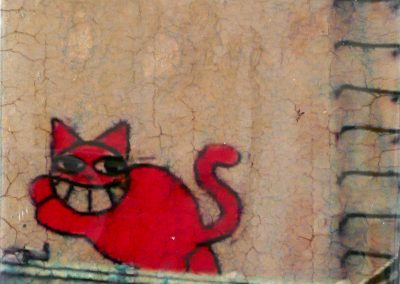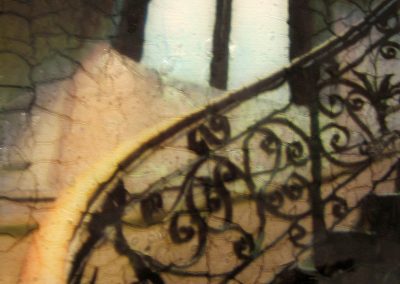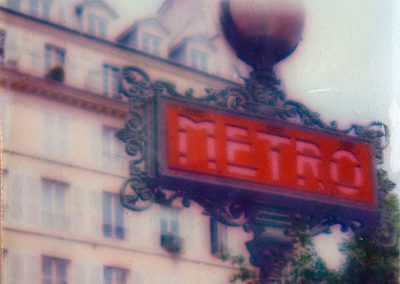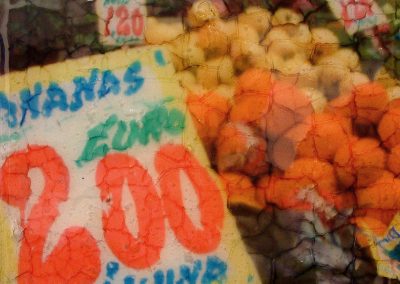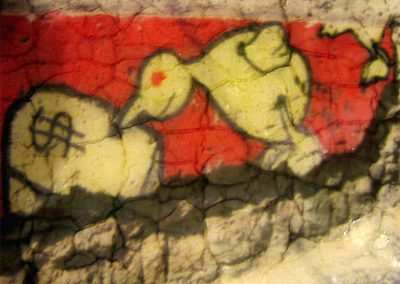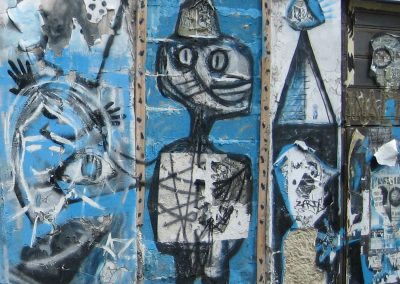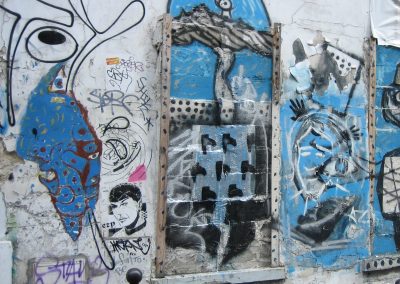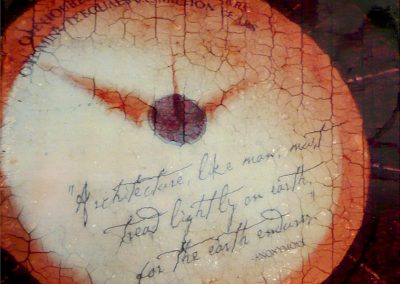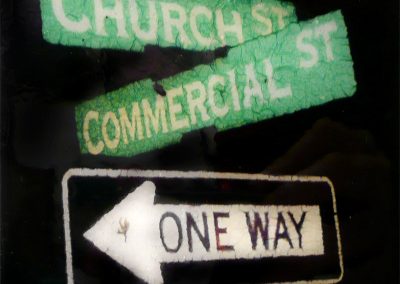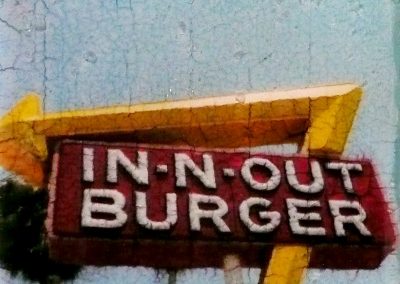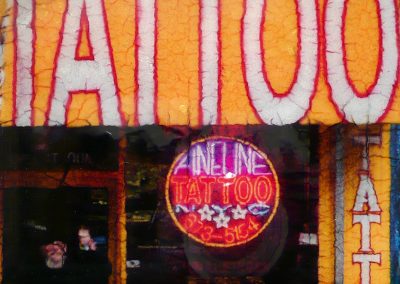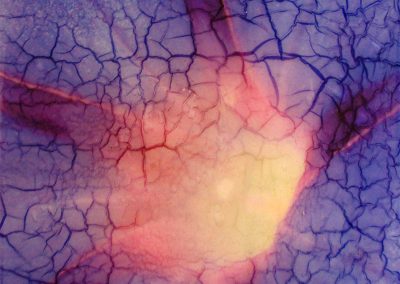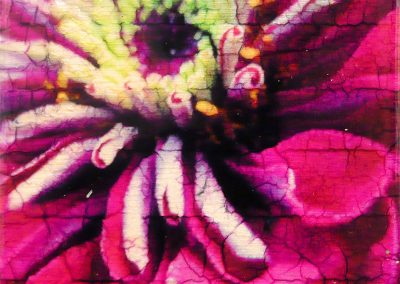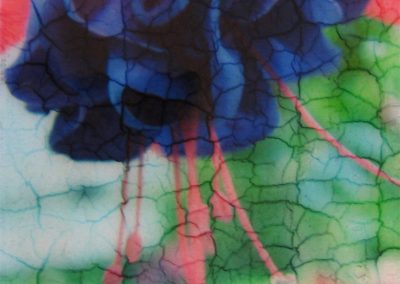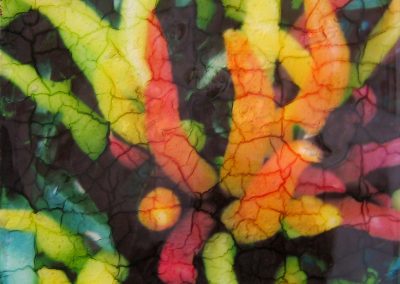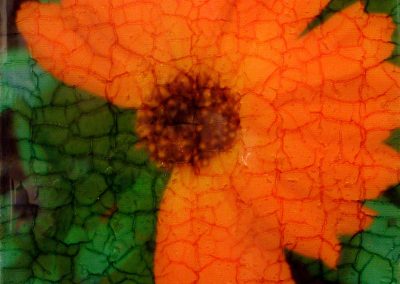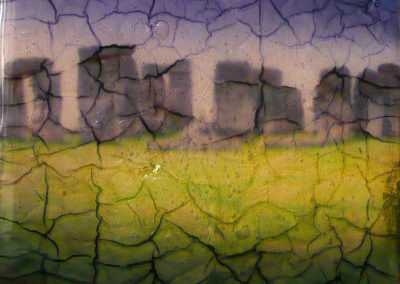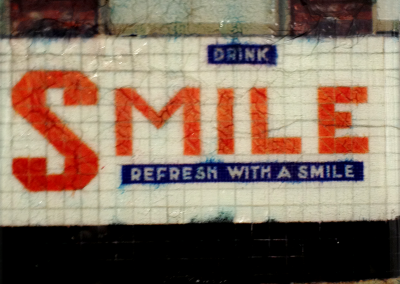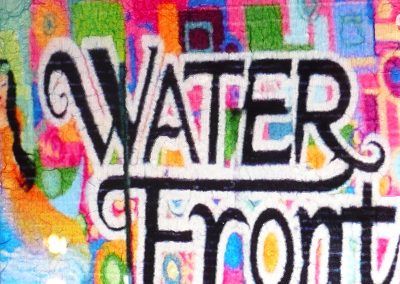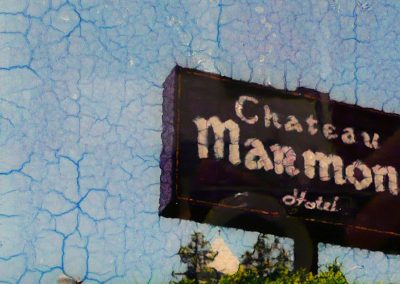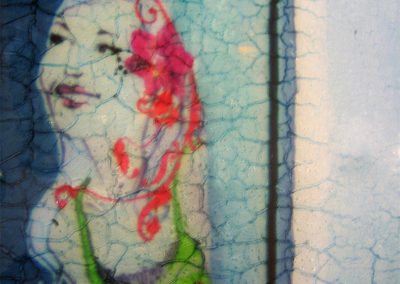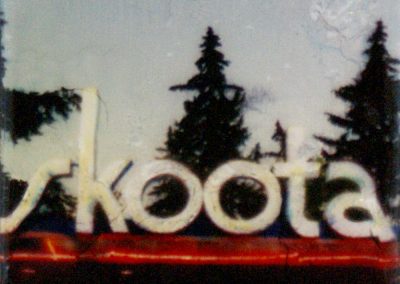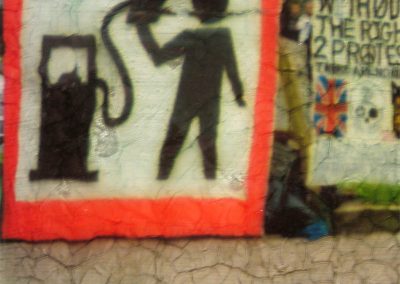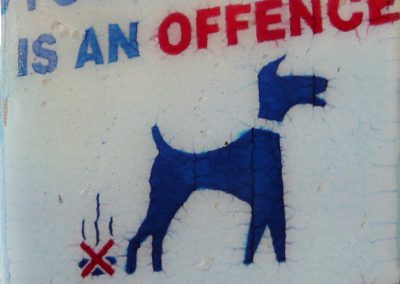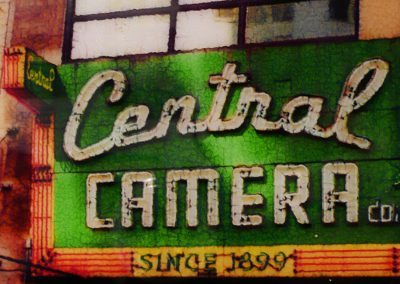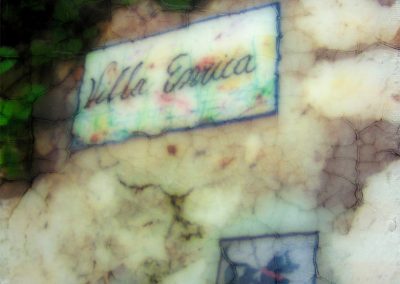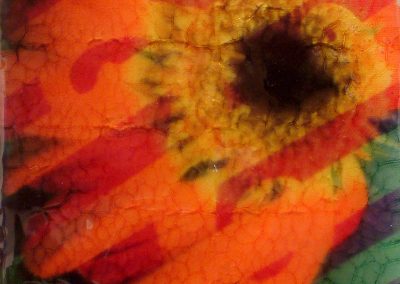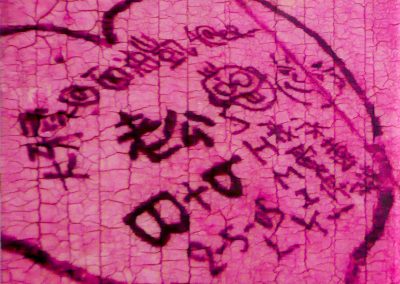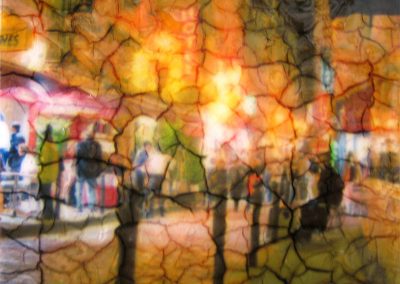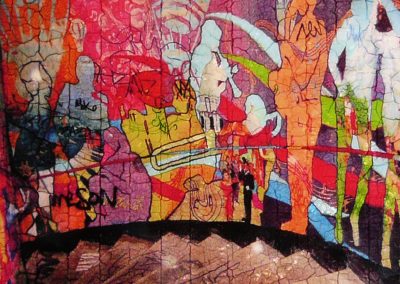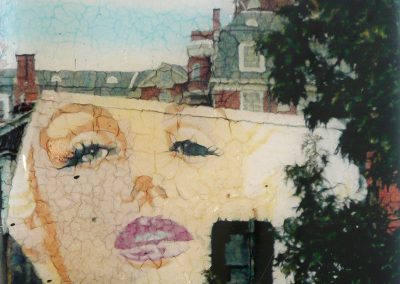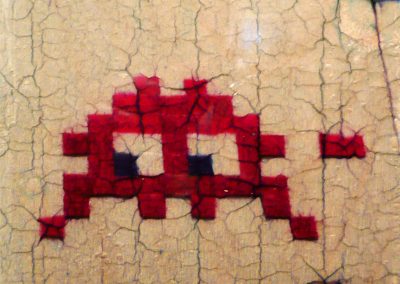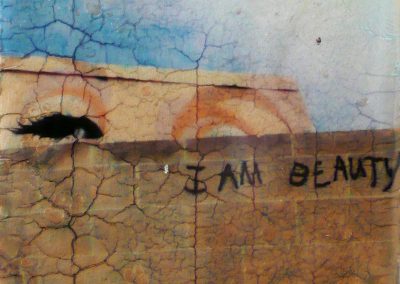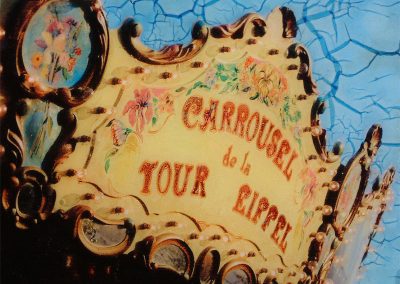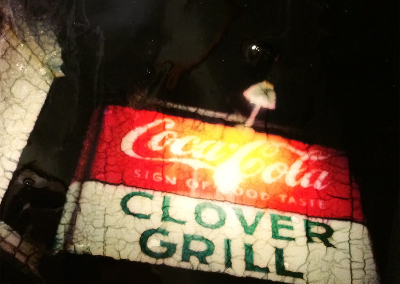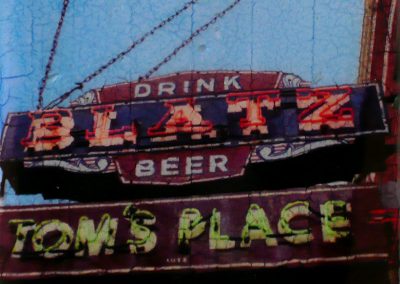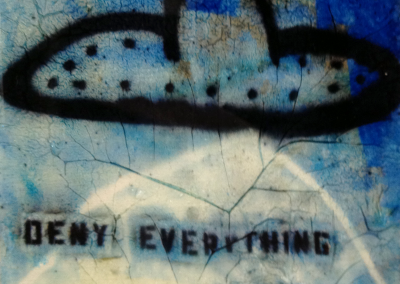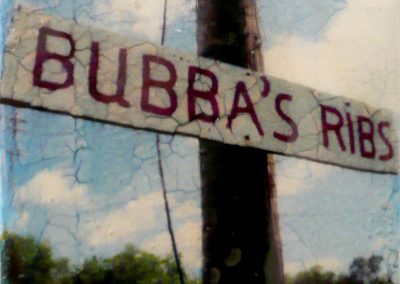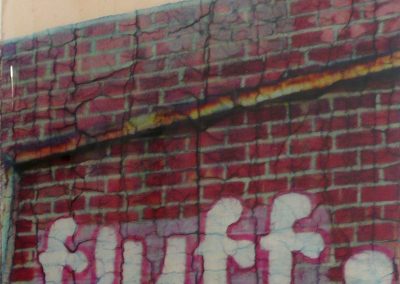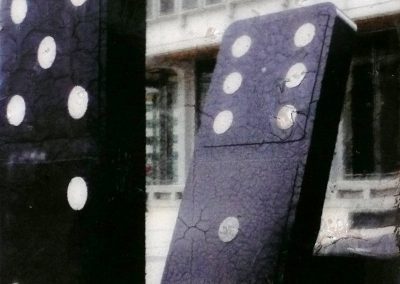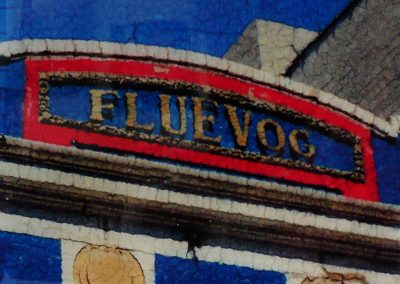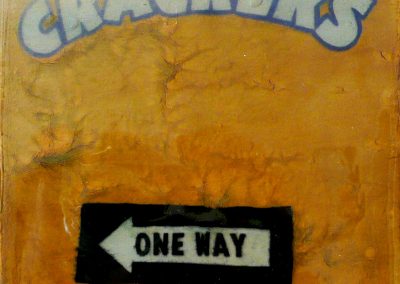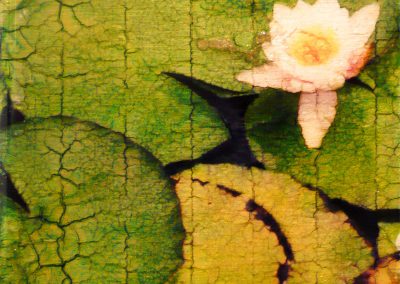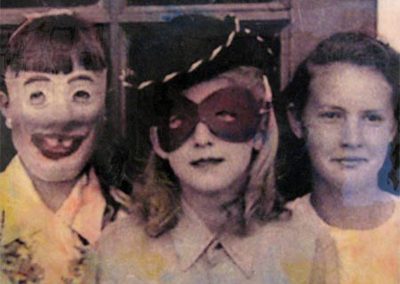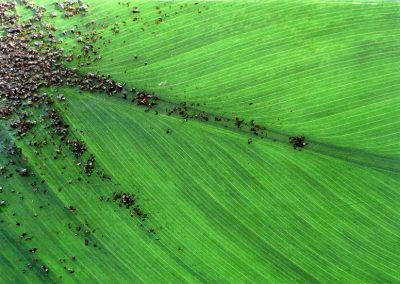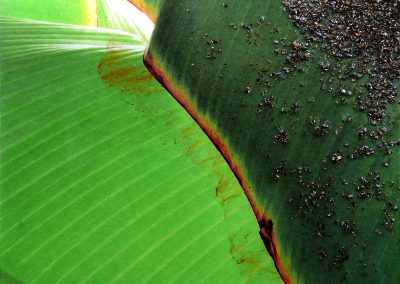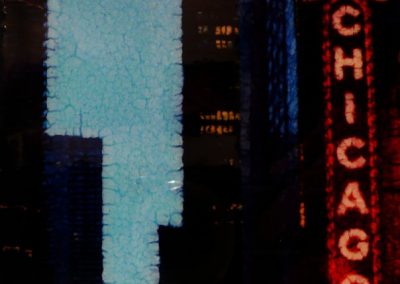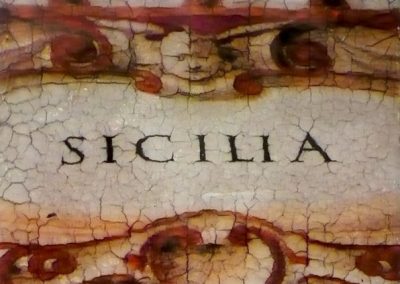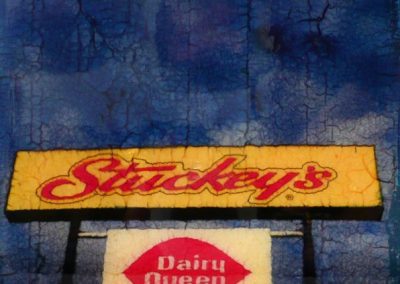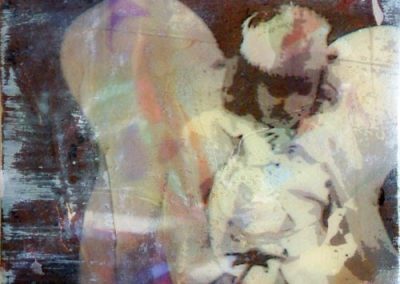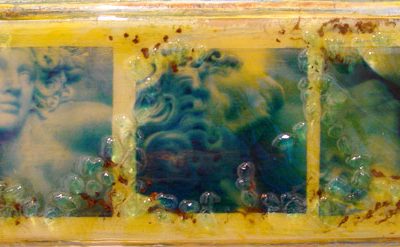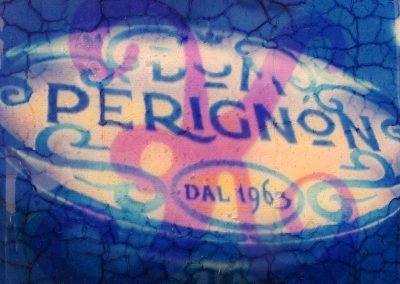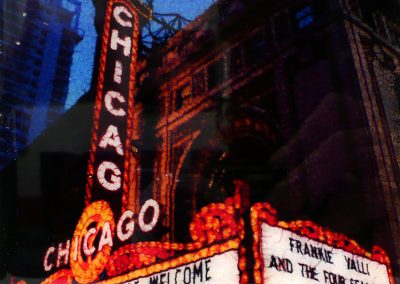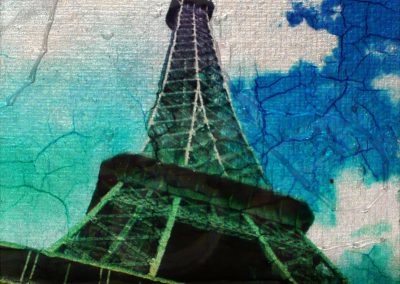This was the first series I developed that really felt like my own creation. I had been creating multi-media pieces with my photos — I would put them on wood panels and then use resin to create layers over the photos with paint, ink, and other objects. I was painting over one of my photos with a water-based coating and it started to wrinkle and peel away from the background layer of the paper. With inkjet photo paper, there is a thin layer that holds the ink and then a thicker layer of paper underneath. My first thought was that I had ruined my piece, but then I decided to start playing with the paper to see if I could get that top layer to remove. What I discovered was that if I printed all my images backwards and then placed them face down on a wood panel that was coated with a thick layer of acrylic gel, the water in the gel would pull the top layer of the photo off the paper. After letting it dry for about 10-15 minutes, I use an Xacto knife to carefully cut that top layer off the paper and then when I pull the paper away, I’m left with a transfer of my original photo. Because that top layer is so thin, the process of pulling the paper away pulls on it and creates some wrinkles and cracks. This is the part that I love because it takes away from the perfection of the photo and makes it look like something else, possibly a painting. It also makes each piece completely unique because I can’t ever recreate the same process and get the same effect. Once the pieces dry, I paint the sides of the wood panels to give them a 3-D effect and then coat the pieces with resin to protect them and make the colors pop. The resin really saturates the color and gives them a vibrance.
When I started making these pieces, the paper that I was using was made my a company that was going out of business. So, I bought all the paper I could find and haven’t been able to find another paper that does this for me. So, when I run out of the paper, this series will officially end. But I’ve had fun making them.
